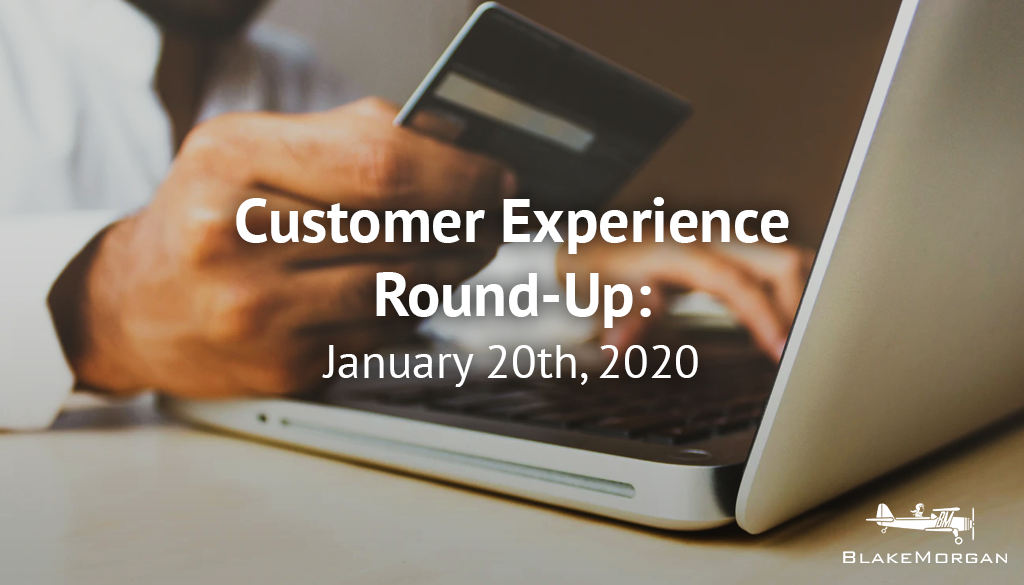These days, it’s nearly impossible for most consumers to imagine connecting with brands without using technology. From shopping via apps to chatting on social media, technology is everywhere and plays a major role in customer experience. This week, we saw three stories of how brands are adapting to include new technology to better serve customers.
Walmart To Add More In-Store Robots
Walmart’s army of robots is about to get bigger. After testing in-store robots last year, the company announced it will roll them out to an additional 650 stores in 2020. The tall robots roam store aisles to alert employees about items that need to be restocked and other issues. A single Walmart robot can do in one day what it would take a human employee two weeks to do, and by tracking out-of-stock items, the robots could potentially solve a problem that costs retails trillions of dollars a year. Experts predict robots could replace about half of the retail work of human employees, but Walmart says the move to automation is to allow humans to better serve customers, not to replace them.
Robots are the unavoidable future of retail and come with many benefits. By keeping the store clean and alerting human employees of missing items, the robots ideally create a better shopping experience for customers. With many of their mundane tasks automated, employees can offer more personalized service for customers. One of the biggest roadblocks is educating customers to accept the new robots and re-training existing employees to take on new tasks. Walmart sets the example for many big-box stores, meaning that its robot expansion could lead to other stores following in its footsteps.
LA Cabs Launch App To Compete With Uber
Ride-sharing apps like Uber and Lyft have taken off in recent years, but one group has been left behind: taxi drivers. With their business dropping by more than 75% in the last decade, cab drivers in Los Angeles are fighting back with technology. A new app mimics many of Uber’s features, including listing fares upfront. One of the major complaints against taxis is that customers don’t know how much the ride will cost until the end, with the price often much higher than they expected. The new app clearly shows the price and offers more transparency into the ride. Cab drivers hopes the technology can help them re-gain customers.
Uber and Lyft have become dominant forces in transportation, especially for younger customers. But taxis aren’t dead yet, largely because they serve some groups ride-sharing companies don’t, including people who only use cash and those with disabilities who require an accessible ride. Creating an app that clearly shows the route and price could help put taxis on a more equal playing field with ride-sharing services and create a better experience for customers. When customers have more options to get great service, they are empowered to make the right choice for their situation, which is a win for all consumers.
Bose To Close All Stores In North America
Another brick-and-mortar store bites the dust. Audio equipment company Bose, known for its immersive retail stores in malls and airports, announced it will close its 120 stores across North America and Europe and focus entirely on e-commerce. The only remaining physical stores will be in China and South Korea. Instead of showcasing its products and allowing customers to try the gadgets before they buy them, Bose will switch to online sales and focus on items that customers buy without trying, such as noise-cancelling headphones.
While some customers prefer to test their items before making a purchase, many of Bose’s most popular items are now largely purchased online. Bose originally designed its stores around what customers were looking for and will continue to do so—but now, customers prefer to shop online. Staying on top of customer demand can help the company stay afloat and still offer its products, just with a different, technology-driven experience.
Customers want a convenient and personalized experience, and technology helps provide that. The companies best prepared for the future know how to listen to customers and leverage technology in the right ways to improve their internal processes and the external customer experience.
Blake Morgan is a customer experience futurist, keynote speaker, and the author of two books including her new book The Customer Of The Future. You can learn more by signing up for her newsletter here.

